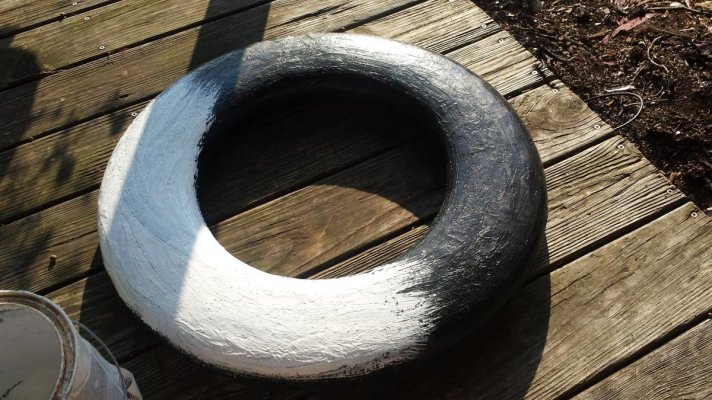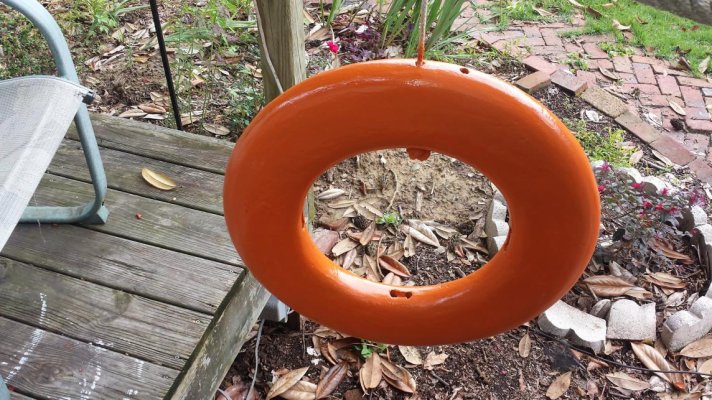sdowney717
Guru
- Joined
- Jan 26, 2016
- Messages
- 2,264
- Location
- United States
- Vessel Name
- Old Glory
- Vessel Make
- 1970 Egg Harbor 37 extended salon model
https://www.law.cornell.edu/cfr/text/46/117.70
Mine is white and 24 inches wide.
But if your going along the coast you have to have an orange ring buoy.
(5) If on a vessel on an oceans or coastwise route, be orange in color.
Actually I did not know you had to have a 'ring buoy'. I had though one of those floating cushions was ok.
So do you all have an orange one readily displayed and free to be thrown?
Reading through the list, I am not in compliance, I don't have a light on the buoy for example.
(d) At least one ring buoy must be fitted with a floating waterlight, unless the vessel is limited to daytime operation, in that case no floating waterlight is required.
And my floating line is not this strong.
(1) Be buoyant;
(2) Be at least 18.3 meters (60 feet) in length;
(3) Be non-kinking;
(4) Have a diameter of at least 7.9 millimeters (5/16-inch);
(5) Have a breaking strength of at least 5 kilonewtons (1,124 pounds); and
(6) Be of a dark color if synthetic, or of a type certified to be resistant to deterioration from ultraviolet light.
Has anyone gotten in trouble from USCG for failing to meet these regs?
Are you in compliance with all of these regulations?
Mine is white and 24 inches wide.
But if your going along the coast you have to have an orange ring buoy.
(5) If on a vessel on an oceans or coastwise route, be orange in color.
Actually I did not know you had to have a 'ring buoy'. I had though one of those floating cushions was ok.
So do you all have an orange one readily displayed and free to be thrown?
Reading through the list, I am not in compliance, I don't have a light on the buoy for example.
(d) At least one ring buoy must be fitted with a floating waterlight, unless the vessel is limited to daytime operation, in that case no floating waterlight is required.
And my floating line is not this strong.
(1) Be buoyant;
(2) Be at least 18.3 meters (60 feet) in length;
(3) Be non-kinking;
(4) Have a diameter of at least 7.9 millimeters (5/16-inch);
(5) Have a breaking strength of at least 5 kilonewtons (1,124 pounds); and
(6) Be of a dark color if synthetic, or of a type certified to be resistant to deterioration from ultraviolet light.
Has anyone gotten in trouble from USCG for failing to meet these regs?
Are you in compliance with all of these regulations?
Last edited:





